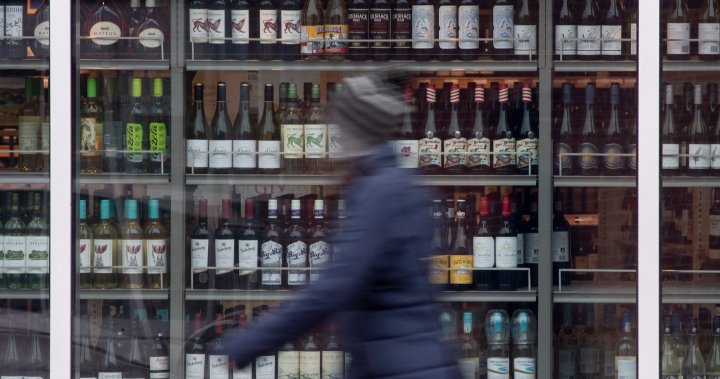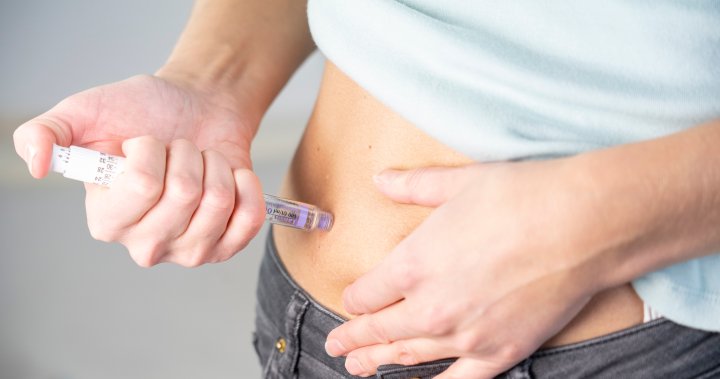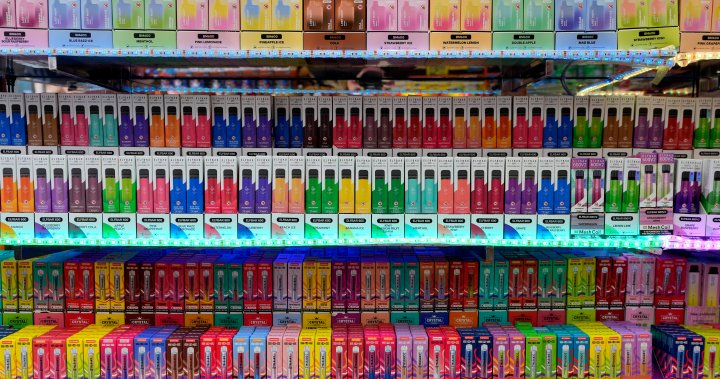Can you abstain from alcohol for a month?
That is the core question of the Canadian Cancer Society’s Dry Feb, a fundraising campaign challenging Canadians to hold off on consuming their favourite alcoholic beverages for a month, while raising funds for cancer research.
With campaigns such as Dry Feb and Dry January, and the growing popularity of non-alcoholic drinks, the stigma of not drinking alcohol may be starting to shift, said Ciana Van Dusen, advocacy manager of prevention and early detection with the Canadian Cancer Society.
“The interesting thing about alcohol is it’s actually one substance where we almost have reverse stigma, a stigma for not consuming as opposed to stigma for consuming,” she told Global News.
“The ability to say no to drinking alcohol is getting a lot more normal or acceptable … and you get less questioning.”
A 2021 Statistics Canada study showed drinking habits among Canadians were changing.
At the time, the agency reported almost 5.1 million people, or 15.6 per cent of Canadians aged 12 years and older, engaged in heavy drinking – defined as having five or more drinks for men and four or more for women, on one occasion, at least once a month in the previous year.
Nevertheless, it was the lowest level of heavy drinking since Statistics Canada first asked in 2015. Canadians aged 18 to 34 years (1.7 million people) were most likely to report being heavy drinkers in 2021, down 10.1 per cent from a year earlier, and 31.5 per cent lower compared with 2015.
And in 2019, Statistics Canada reported 23.5 per cent of the entire adult population does not drink alcohol.
Joel Gregoire, associate director for food and drink at market research company Mintel, told The Canadian Press in October that its research shows around 15 per cent of Canadians 20 and older don’t drink at all.
Gregoire added there’s another, likely much larger group of consumers — known as the “sober curious” — that aren’t cutting out alcohol entirely, but cutting back.
Get the latest Health IQ news.
Sent to your email, every week.
While there are a number of reasons why people drink less alcohol, be it lifestyle or health for example, businesses are seizing the opportunity in creating a number of non-alcoholic alternatives.
“I get really excited now when I go to a restaurant or a bar and I see that there are non-alcoholic options, because studies are showing that when options are there, people choose them,” Van Dusen said.
“The fact that that’s growing demonstrates the growing desire and demand in that space.”
Canada’s non-alcoholic beverage sector brought in more than $5 billion to the economy in 2019, a June study by The Conference Board of Canada found.
The non-profit think tank found real total consumption expenditure of non-alcoholic beverages grew by 14 per cent between 2010 and 2019 —and it expects it to continue to grow given population expansion.
The Conference Board of Canada noted that the country’s non-alcoholic beverage sector encompasses a wide range of products, including bottled water, carbonated soft drinks, fruit and vegetable juices, and ready-to-drink tea and coffee.
“About half of every dollar (54 per cent) that consumers spend on non-alcoholic beverages went toward carbonated soft drinks, iced/ready-to-drink tea and coffee drinks, and still (non-carbonated) drinks,” the study said.
“Carbonated soft drinks alone make up the largest share of spending across all provinces, with over half of expenditures on non-alcoholic beverages in Newfoundland and Labrador and New Brunswick incurred in this category.”
While it’s unclear how much drinks like non-alcoholic beer and wine Canadians consume, that hasn’t stopped the expansion of the sector.
In 2019, Diageo, a multinational beverage company that includes Guinness, Baileys, Smirnoff and Tanqueray in its portfolio, bought non-alcoholic spirits company Seedlip.
It has launched non-alcoholic versions of several well-known products in the past couple of years, making a splash with the Canadian launch of its non-alcoholic Guinness this September. Its non-alcoholic Tanqueray gin, launched in 2021, is also available in Canada.
The “sober curious” group is growing, especially among younger generations, Nadia Niccoli, Diageo’s director of marketing for North America, told The Canadian Press in October.
“This is something we’ve been working on for quite some time,” she said.
“But the reality is that the rapid change in consumer habits has given us the opportunity to offer more versatility and come to market quicker, knowing that the demand is there versus us trying to create the demand back in 2017, 2018.”
Drinking alcohol can raise the risk of developing head and neck, breast, colorectal, esophageal, liver, stomach and pancreatic cancers, the Canadian Cancer Society says.
Drinking about three-and-a-half drinks a day doubles, or even triples, the risk of developing cancer of the mouth, pharynx, larynx and esophagus, and increases the risk of developing colorectal cancer and breast cancer by one-and-a-half times.
The less alcohol you drink, the lower your cancer risk, Van Dusen said.
In fact, the Canadian Centre on Substance Use and Addiction announced guidelines last year suggesting Canadians limit alcohol intake to two standard drinks a week.
Iris Gorfinkel, a family physician in Toronto, told Global News Toronto’s The Morning Show on Wednesday that abstaining from alcohol for a month will lead to better sleep.
“Alcohol sticks around in our body, has a half-life of about five hours … so it reduces our REM sleep, that’s our dream sleep. That’s what happens when our memories are consolidated, so it effects memory and performance the following day,” she said.
“When I say ‘fragment sleep,’ there’s multiple sleep disruptions and people don’t remember those sleep disruptions. They don’t connect necessarily the poor performance the following day with having something to drink the night before.”
Van Dusen said some Dry Feb participants told the society they also had more energy after holding out on alcohol.
“Seventy-five per cent of participants report experiencing enough benefits during the month of February that they’ll actually continue to reduce their alcohol consumption for the rest of the year,” she said.
“That’s a really positive sign when you talk about changing habits and behaviours; it demonstrates that when we flex different muscles, and we practice socializing and celebrating and connecting in different spaces or in different ways, it can feel a lot more comfortable than maybe we anticipate when we go into a month with no alcohol.”
— with files from The Canadian Press




